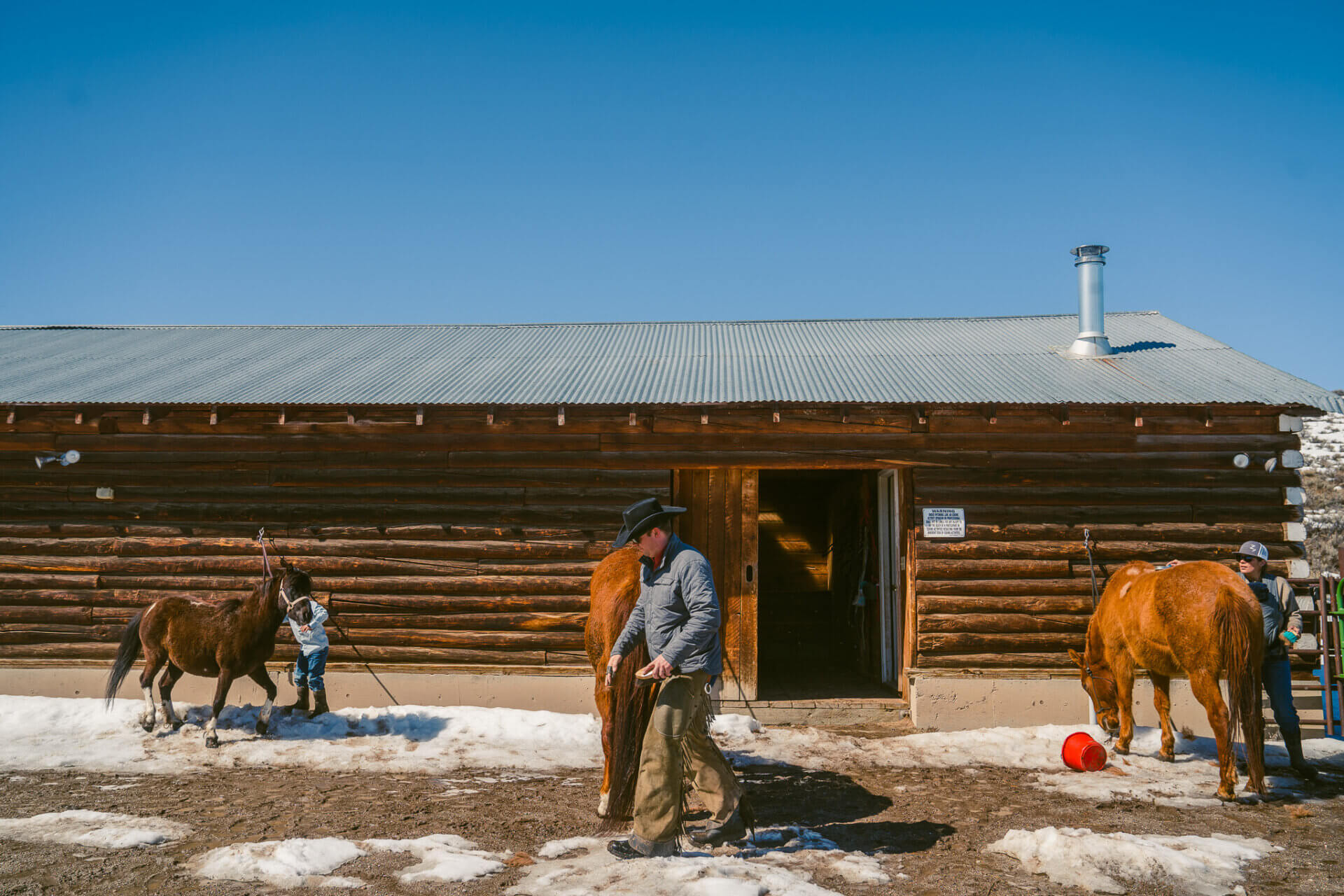
The Double J: A Piece of the Puzzle
On a toasty morning in early April, Wyatt and Leah Zupan sit with their sons, 5-year-old Coyt and 2-month-old Hayes, in lawn chairs at “the beach.” Toasty in Daniel, Wyoming, in April, means about 45 degrees, and the beach means a warm sunny spot on the south side of the home they have shared on the Double J Ranch since coming on as ranch managers in 2015. Ranch owner and former JHLT board member JJ Healy purchased the Double J in 2002 and put 475 acres into a conservation easement in 2007. Wyatt and Leah now spearhead the ranch’s dynamic and innovative management style that is as good for the business side of things as it is for the health of the land and the cows.

“It’s not about fighting mother nature,” says Leah, “It’s about trying to fit our puzzle piece in as best we could.” Their style emphasizes good genetics in their livestock, “flash-grazing,” splitting cows into more manageable herd sizes, and utilizing local resources and incentive-based programs that reward them for practices they are already implementing. The Zupans keep a few dozen cows year-round that calve in the spring, and then host about a thousand yearlings from a lessee from spring to fall. This way, they make good money off the ranch and get to “cowboy all summer and ride, ride, ride, ride, ride, ride, ride,” as Leah puts it.
They have found success in making sure pastures get regular rest from both haying and grazing, keeping herd sizes manageable and moving, and teaching cows how to be good grazers through portable electric fencing, relocating minerals, opening gates, and, of course, cowboying. Wyatt and Leah attest that, “Cattle are lazy naturally. It really is a lot of effort to move them to better feed. When there are fewer, it’s easier to get them to good feed.” This short-duration, high-intensity management style means the cows get the best forage before moving on, and the native plants are not excessively grazed and trampled, mimicking the ancient bison herds that once roamed this high desert ecosystem. Even during drought years, the Double J’s pastures boast tall, luscious grass that leaves their neighbors scratching their heads. “We hope more people will embrace regenerative grazing,” says Wyatt.

The Double J also takes advantage of local resources and partnerships available to local landowners and managers. They have worked with Wyoming Game and Fish Department to install wildlife-friendly fencing throughout the ranch and implement habitat enhancements on the section of Horse Creek that flows through the property. “We try to look for programs for things that we’re doing already,” says owner JJ Healy. For several years, they participated in the Natural Resource Conservation Service’s Sage Grouse Initiative, which paid them for resting pastures and avoiding excessive livestock grazing (things they were already doing). According to JJ, the ranch has come a long way since he first bought it. He lovingly described it as “the worst house on the nicest block. No one had lived here for 40 years.”
The Double J hosts more than just cows. It also provides a space for the Jae Foundation, a mental health and suicide awareness group that sees about 200 participants at the ranch each summer. Inspired by a local family that lost a young member to suicide in 2016, 25-30 guests stay at a time to experience the ranch’s beauty and get outside to support mental health and healing. The retreat also provides leadership development for a wide variety of groups.
Collaboration, innovative management strategies, and a shared commitment to the health of the land, people, livestock, and wildlife have made the Double J a shining example of stewardship. “We found Double J’s niche”, says Leah. “We’re a good team because we all have different perspectives.”
